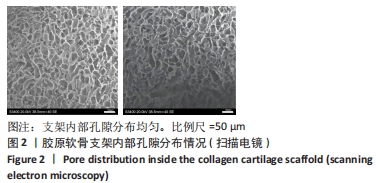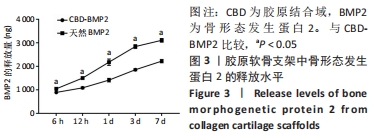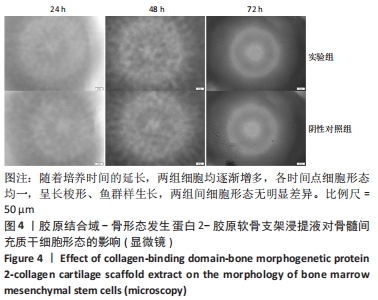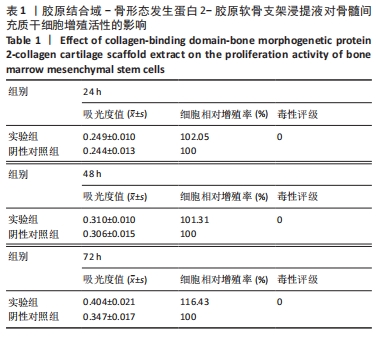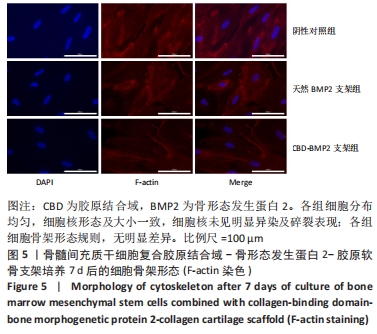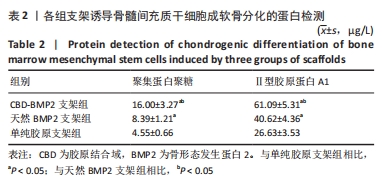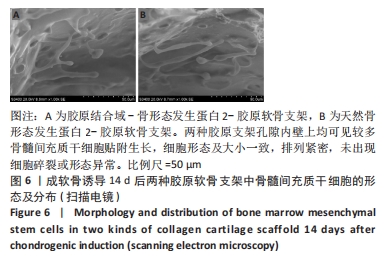[1] MORADI M, PARVIZPOUR F, ARABPOUR Z, et al. Articular Cartilage Injury; Current Status and Future Direction. Curr Stem Cell Res Ther. 2023:18. doi: 10.2174/1574888X18666230418121122.
[2] BAO Z, CHEN M, LI C, et al. Monosodium iodoacetate-induced subchondral bone microstructure and inflammatory changes in an animal model of osteoarthritis. Open Life Sci. 2022;17(1):781-793.
[3] 王新伟,赵英杰,常艳,等.间充质干细胞治疗骨关节炎软骨损伤:作用、应用与问题[J].中国组织工程研究,2021,25(31):5053-5058.
[4] TALESA G, MANFREDA F, PACE V, et al.The treatment of knee cartilage lesions: state of the art. Acta Biomed. 2022;93(4):e2022099.
[5] YU H, HUANG Y, YANG L. Research progress in the use of mesenchymal stem cells and their derived exosomes in the treatment of osteoarthritis. Ageing Res Rev. 2022;80:101684.
[6] YAMASHITA A, TSUMAKI N. Recent progress of animal transplantation studies for treating articular cartilage damage using pluripotent stem cells. Dev Growth Differ. 2021;63(1):72-81.
[7] ZELINKA A, ROELOFS AJ, KANDEL RA, et al. Cellular therapy and tissue engineering for cartilage repair. Osteoarthritis Cartilage. 2022; 30(12):1547-1560.
[8] 阮世强,邓江,鄢陵,等.聚乳酸/聚羟基乙酸共聚物支架复合骨形态发生蛋白2基因增强的脂肪干细胞促进软骨缺损修复[J].中国组织工程研究,2018,22(6):840-845.
[9] CUI Y, XU B, YIN Y, et al. Collagen particles with collagen-binding bone morphogenetic protein-2 promote vertebral laminar regeneration in infant rabbits. Biomed Mater. 2020;15(5):055008.
[10] ADDI C, MURSCHEL F, CRESCENZO GD. Design and Use of Chimeric Proteins Containing a Collagen-Binding Domain for Wound Healing and Bone Regeneration. Tissue Eng Part B Rev. 2017;23(2):163-182.
[11] ZHANG J, ZHANG Y, JIANG YK, et al. The effect of poly(lactic-co-glycolic acid) conduit loading insulin-like growth factor 1 modified by a collagen-binding domain on peripheral nerve injury in rats. J Biomed Mater Res B Appl Biomater. 2022;110(9):2100-2109.
[12] ZHAO C, XIAO Y, LING S, et al. Structure of Collagen. Methods Mol Biol. 2021;2347:17-25.
[13] CHEN B, LIN H, ZHAO Y, et al. Activation of demineralized bone matrix by genetically engineered human bone morphogenetic protein-2 with a collagen binding domain derived from von Willebrand factor propolypeptide. J Biomed Mater Res A. 2010;80A(2):428-434.
[14] ŻYLIŃSKA B, SOBCZYŃSKA-RAK A, LISIECKA U, et al. Structure and Pathologies of Articular Cartilage. In Vivo. 2021;35(3):1355-1363.
[15] CAI Z, CUI Y, WANG J, et al. A narrative review of the progress in the treatment of knee osteoarthritis. Ann Transl Med. 2022;10(6):373.
[16] LIU Y, SHAH KM, LUO J. Strategies for Articular Cartilage Repair and Regeneration. Front Bioeng Biotechnol. 2021;9:770655.
[17] NIKHIL A, KUMAR A. Evaluating potential of tissue‐engineered cryogels and chondrocyte derived exosomes in articular cartilage repair. Biotechnol Bioeng. 2022;119(2):605-625.
[18] SIMON T, JACKSON D. Articular Cartilage: Injury Pathways and Treatment Options. Sports Med Arthrosc Rev. 2018;26(1):31-39.
[19] KRYCH AJ, SARIS DBF, STUART MJ, et al. Cartilage Injury in the Knee: Assessment and Treatment Options. J Am Acad Orthop Surg. 2020; 28(22):914-922.
[20] BALIAN G, CLICK EM, BORNSTEIN P. Location of a collagen-binding domain in fibronectin. J Biol Chem. 1980;255(8):3234-3236.
[21] LIU J, MENG Z, XU T, et al. A SIRPαFc Fusion Protein Conjugated With the Collagen-Binding Domain for Targeted Immunotherapy of Non-Small Cell Lung Cancer. Front Immunol. 2022;13:845217.
[22] ZHAI Y, WANG Q, ZHU Z, et al. Cell-derived extracellular matrix enhanced by collagen-binding domain-decorated exosomes to promote neural stem cells neurogenesis. Biomed Mater. 2021;17(1):014104.
[23] WANG YN, SUN N. Application of acellular dermal matrix loaded collagen binding domain-vascular endothelial growth factor patch in urethral wound repair in beagles. Zhonghua Yi Xue Za Zhi. 2021; 101(36):2900-2905.
[24] NGUYEN V, MEYERS CA, YAN N, et al. BMP2-induced bone formation and neural inflammation. J Orthop. 2017;14(2):252-256.
[25] PARK SY, KIM KH, KIM S, et al. BMP2 Gene Delivery-Based Bone Regeneration in Dentistry. Pharmaceutics. 2019;11(8):393.
[26] SALAZAR VS, GAMER LW, ROSEN V. BMP signalling in skeletal development, disease and repair. Nat Rev Endocrinol. 2016;12(4): 203-221.
[27] DEVINE JG, DETTORI JR, FRANCE JC, et al. The use of rhBMP in spine surgery: is there a cancer risk? Evid Based Spine Care J. 2012;3:35-41.
[28] SHARMA U, PAL D, PRASAD R. Alkaline phosphatase: an overview. Indian J Clin Biochem. 2014;29(3):269-278.
[29] MeSFIN A, BUCHOWSKI JM, ZEBALA LP, et al. High-Dose rhBMP-2 for Adults: Major and Minor Complications-A Study of 502 Spine Cases. J Bone Joint Surg Am. 2013;95(17):1546-1553.
[30] 袁佳滨,缪雄,栗景峰,等.骨形态发生蛋白2临床应用的不良反应[J].第二军医大学学报,2019,40(9):1010-1014.
[31] 黄菲,王海,陈尧清,等.骨形态发生蛋白2信号对肿瘤组织中调节性T细胞分化和浸润的作用[J].中国医学科学院学报,2021, 43(6):897-904.
[32] SORUSHANOVA A, DELGADO LM, WU Z, et al. The Collagen Suprafamily: From Biosynthesis to Advanced Biomaterial Development. Adv Mater. 2019;31(1):e1801651.
[33] MIE NALTOWSKI MJ, BIRK DE. Structure, physiology, and biochemistry of collagens. Adv Exp Med Biol. 2014;802:5-29.
[34] 方洪松,周建林,彭昊,等.组织工程支架材料修复关节软骨缺损[J].中国组织工程研究,2016,20(52):7891-7898.
[35] SAITO W, UCHIDA K, UENO M, et al. Acceleration of bone formation during fracture healing by injectable collagen powder and human basic fibroblast growth factor containing a collagen-binding domain from Clostridium histolyticum collagenase. J Biomed Mater Res A. 2014;102(9):3049-3055.
[36] KIM DG, KIM EY, KIM YR, et al. Construction of Chimeric Human Epidermal Growth Factor Containing Short Collagen-Binding Domain Moieties for Use as a Wound Tissue Healing Agent. J Microbiol Biotechn. 2015;25(1):119-126. |


